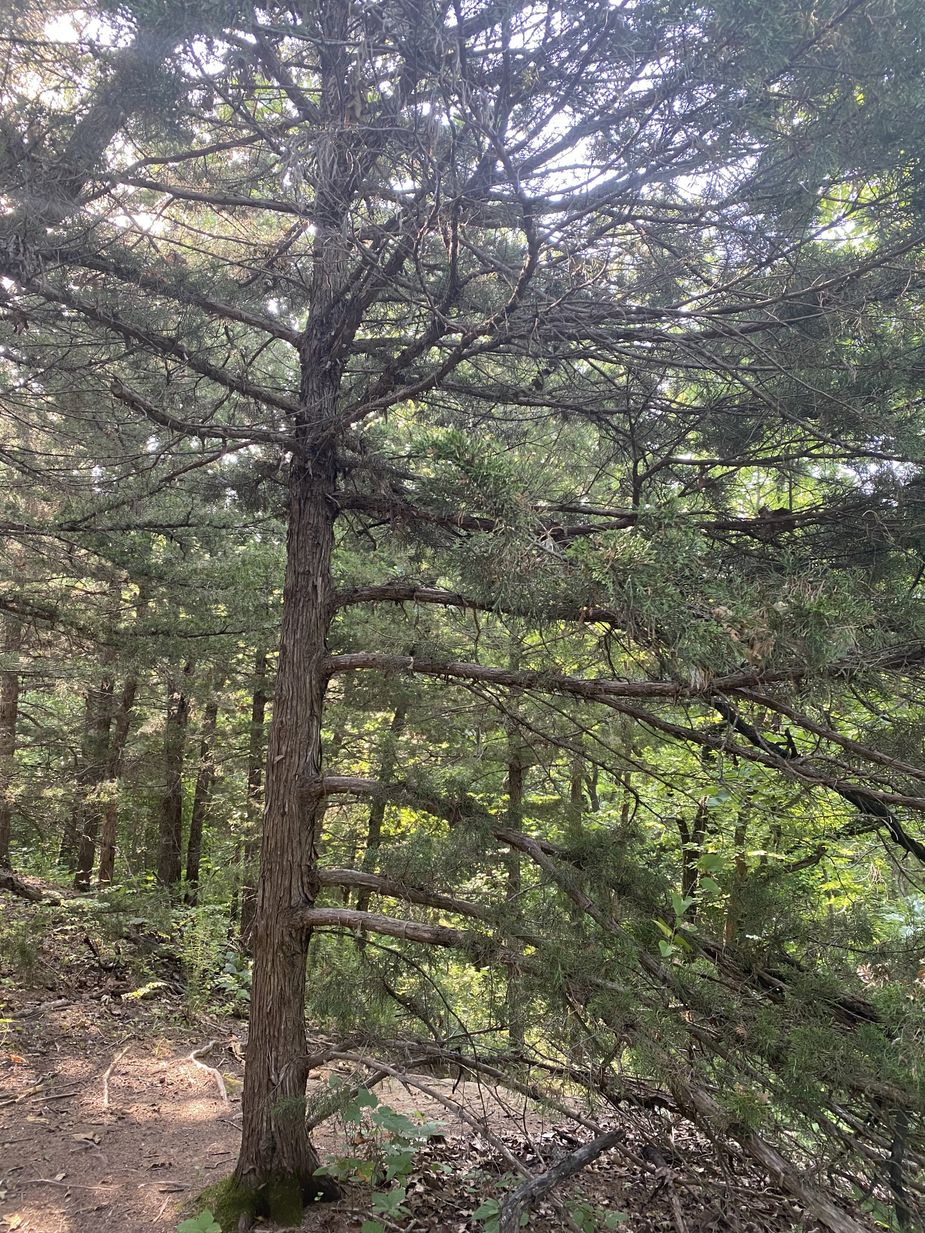Intern-al Affairs: Cedar Stories
Published July 2020
By Greg Elwell | 5 min read
Intern-al Affairs is the weekly blog for Oklahoma Today summer intern Haley Humphrey. Check back each week as she explores Oklahoma's past, present, and future. Read her previous “Intern-al Affairs” entries here:
Sharing the Light
In the Cards
Hidden Histories
Unforgettable Heights
The dark green needle-like leaves of the red cedar stretch toward the sky. Its perfume welcomes you into the forest and makes you feel at home. It’s ubiquitous in many northern and eastern states, but I stumbled upon the tree in Stillwater.
I was spending time in the Oklahoma Today’s archives, searching for my next blog idea when I opened our December 1996/January 1997 issue. I wanted a “Christmas in July” topic. You can imagine my excitement when I found Louise Riotte’s story about Juniperus virginiana, the scientific name for red cedar, on page 24.
I must admit, I was unaware the red cedar is a traditional Christmas tree for many families. Our Christmas in July is off to a fabulous start. Riotte’s piece had more information about red cedars than I could have ever learned in a biology class. As I hiked along Lake McMurtry’s Yellow Trail north loop, I glanced at the red cedars around me in a more appreciative light.

Red cedars flank the Yellow Trail north loop around Lake McMurtry in Stillwater. Photo by Haley Humphrey
I’ve always thought of trees as producers of oxygen, but during and after the hike it really hit me how much more they give than just air.
Red cedars can live up to 300 years with roots in their natural habitat, if they haven’t been moved by humans. Even calling them cedars is a misnomer—the trees are, as the scientific name attests, from the juniper family.
According to Riotte’s story, Oklahoma has five junipers: the ashe juniper that grows on the Arbuckle Mountains, the onseed juniper native in the panhandle (I saw these at Black Mesa and they are very different in appearance to the ones at Lake McMurtry), the pinchot juniper in southwest Oklahoma, the Rocky Mountain juniper on select slopes in Cimarron County, planted for windbreaks, and the eastern red cedar, which is native to every Oklahoma county, except those in the panhandle.
Most people will be able to detect the trees’ pungent scent. Red cedars have many uses, including using that smell to ward off moths when the tree is used to make cedar closets or chests. Cedar oil keeps mosquitoes at bay—especially handy on summer nights—and tea made from cedar chips or sawdust prevents visits from the Mexican bean beetle and squash bug. Even the pale blue berries can be used as an edible sweetener.
But my favorite description of the power that young red cedars exude came from Riotte’s story. She wrote that many Native Americans believe the trees are a spiritual guide to heaven if planted by the grave of a loved one.
I have often wondered what histories trees could tell if they were capable of speaking to us. They do talk to us, inadvertently. Red cedars tell us how they’ve aided generations of people and cultures. From standing tall and ornamented in a living room to providing storage as a chest, they are a part of our lives. For me, they give blessed shade on a scorching summer hike. The next time you’re near a red cedar, I wonder what stories it will tell you.
"Tuesday Trivia: July 7, 2020"
"Weekly Events Calendar July 13-19, 2020"
You May Like
Weekly Events Calendar: March 31-April 6, 2025
This week in Oklahoma: Amazing azaleas in Muskogee; sidewalk masterpieces in Chickasha; and the king holds court in Norman.
This week in Oklahoma: Amazing azaleas in Muskogee; sidewalk masterpieces in Chickasha; and the king holds court in Norman.
Oklahoma Today Podcast: March 31, 2025
OKC baseball fans begin their Oklahoma City Comets chapter this April. Meet the faces behind the new brand, including the mascot Moonshot!
OKC baseball fans begin their Oklahoma City Comets chapter this April. Meet the faces behind the new brand, including the mascot Moonshot!
Meet the Unassuming Golf Gem of South OKC
JR’s Pub and Grill in southwest Oklahoma City is a good time for new and experienced golfers alike.
JR’s Pub and Grill in southwest Oklahoma City is a good time for new and experienced golfers alike.










